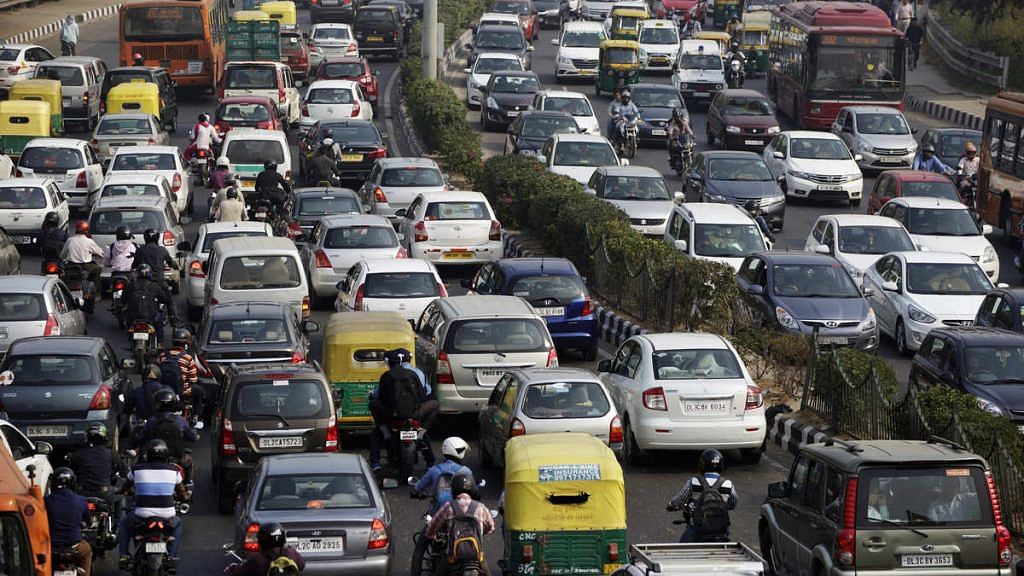There’s no shortage of roads in India that wind through mountains, some little more than gravel tracks with vertiginous drops.
At a height of 3,350 metres, the Zoji La mountain pass takes you from Leh to Srinagar and suffers from mudslides, heavy snow, landslides, and strong winds. Then there’s the Kolli Hill Road in Tamil Nadu, known as the ‘Mountain of Death’ thanks to its 70 continuous hairpin bends.
At just 94km in length, and only 10 years old, the six-lane Mumbai–Pune Expressway seems tame by comparison. Yet it has 52 known blackspots and claims an average of 140 lives each year.
Now it’s the subject of the SaveLIFE Foundation’s plan to create a Zero Fatality Corridor (ZFC) by 2020, which marks the end of the UN Decade Of Action For Road Safety.
In line with the UN programme, the SaveLIFE Foundation aims to improve road safety and traffic management, develop vehicle safety, improve post-crash responses, and educate road users to be more safety-conscious.
Also read: India’s national highways have ‘black spots’ and they are dangerous
Global problem
According to the World Health Organization (WHO), there are around 1.3 million road-related deaths each year worldwide and more than 90% of those happen in low and middle-income countries.
Roughly three-quarters (73%) of all road traffic deaths occur among men under the age of 25. Among the leading causes of death are: excessive speed, driving while under the influence of drink or drugs, failing to use seatbelts or motorcycle helmets, inadequate post-accident responses, and unsafe road infrastructure.
SaveLIFE Foundation’s founder, Piyush Tewari, says the combination of scientific investigation of road crashes, rigorous data analysis and interventions across engineering, enforcement, education, and trauma care are the key to the programme’s success.
“The trauma and suffering induced by road crashes on millions of families is entirely preventable,” he says. “By creating collaborations and focusing on evidence, we can decisively solve the problem.”
There was a 30% reduction in the number of fatalities on the Mumbai–Pune Expressway in 2017 compared with 2016. Statistics from Highway Safety Patrol services state there were 245 accidents in 2016, of which 136 involved loss of life. That had dropped to 206 accidents in 2017, with 106 fatalities.
Saving lives
Road safety in India is governed by the 1988 Motor Vehicles Act – a 30-year-old law written when traffic levels were a fraction of today’s. In 2015, there were 210 million motor vehicles on India’s roads, but only 5.4 million in 1981, government data shows.
SaveLIFE is campaigning for updated legislation, better suited to current conditions. It hopes to persuade legislators to crack down on excessive speed, offer pedestrians greater protection and increase penalties for dangerous driving. “The Act has proved to be inadequate in addressing the systemic challenges plaguing the road transport sector and has failed to ensure road safety for the people of India,” it says.
Amendments to the 1998 act have been drafted, including one that calls for stiffer penalties, a national register for driving licences and another for vehicle registration, and would make helmets mandatory for motorcyclists.
The availability of emergency services in remote and rural parts of many developing countries is one of the factors behind high mortality rates from road crashes. A study in Kenya found that only 5.5% of crash survivors who are admitted into hospital were taken there by police and even fewer (2.9%) by ambulance. That places a high burden on bystanders to step in.
In addition to campaigning, the SaveLIFE Foundation has also been delivering training for first-responders.
According to the WHO, a project to teach first-aid skills to people in parts of Cambodia and in northern Iraq has seen encouraging results in landmine-related deaths. With just basic supplies and no ambulances, mortality fell from 40% to 9%. Teaching life-saving first-aid to people likely to be first on the scene of a road traffic accident could have a similar effect.
This article was originally published on the website of the World Economic Forum.
